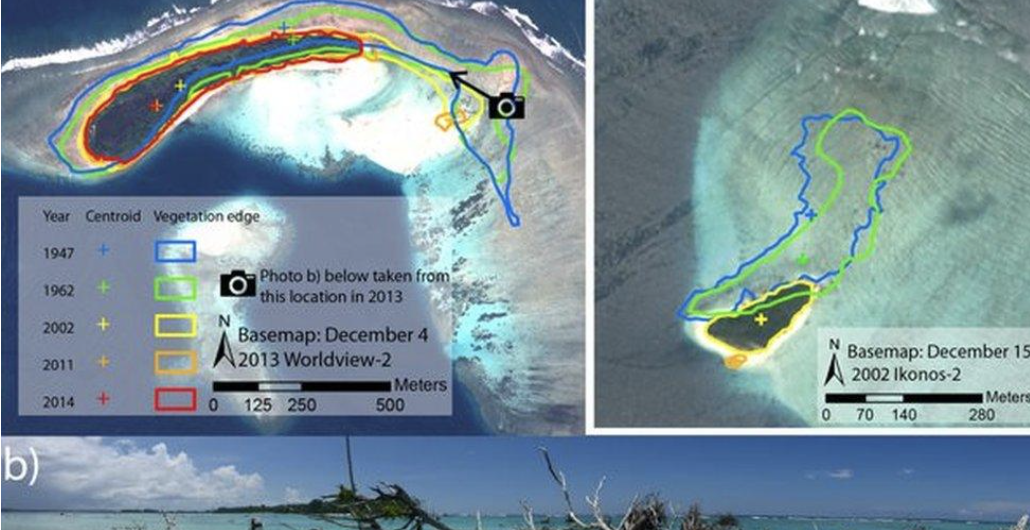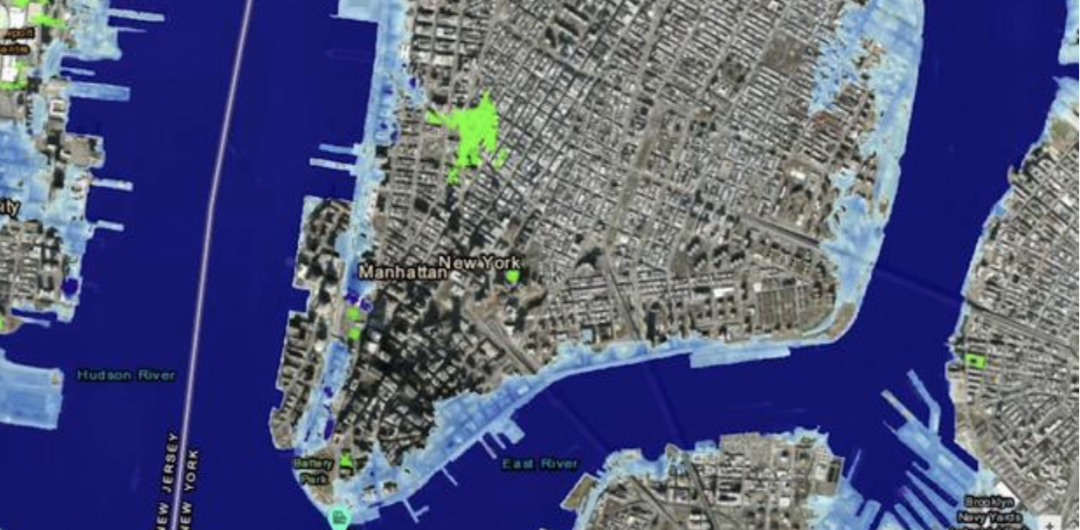Sea Level Rise, 1880-2020. Image via Earth.org
***
Rising sea levels, driven by climate change and human-induced global warming, threaten the existence of island nations across the globe. From the Pacific to the Caribbean, and even within major coastal cities like New York, the accelerating effects of climate change are becoming increasingly evident. While scientists attempt to reach a consensus on the severity of sea-level rise, recent studies suggest that the situation is far more dire than official reports indicate.
The rising sea levels driven by climate change pose an existential threat to island nations and coastal cities worldwide. From the Pacific to the Caribbean and even New York City, the evidence of this crisis is undeniable. To put this into perspective, there are two permanent ice sheets on Earth, one in Antarctica and one in Greenland. As ice sheets in Antarctica and Greenland melt at alarming rates, entire island nations face the risk of disappearing beneath the waves. As of 2023, three of Greenland’s ice shelves have collapsed. These shelves are vital to the structural integrity of Greenland’s glaciers; they are part of an ice sheet that prevents glaciers from melting into the ocean. On an even more concerning level, if these glaciers were set to collapse, sea levels would rise by around 7 feet.
The Marshall Islands, the Maldives, Fiji, Tuvalu, and Kiribati all fall under the category of Small Island Developing States (SIDS). These islands are considered to be coral atolls, all of which are at risk of disappearing. Insert definition of Coral Atoll. Atolls are quite dynamic, as they can change shape, grow in elevation, and merge. At just a few feet high in elevation and not far above sea level, these islands are at risk of destruction at the cost of sea level rise as a result of climate change. The Intergovernmental Panel on Climate Change (IPCC) warns that sea levels could rise as high as 2.8 meters above the 2000 levels by 2100 due to the rapid melting of ice sheets in Antarctica and Greenland.
As of 2016, five uninhabited islands in the Solomon Islands – a nation of hundreds of islands north-east of Australia – have disappeared. The islands that have vanished include Kale, Rapita, Rehana, Kakatina, and Zollies, demonstrating that this is not a distant threat—it is happening now. These islands were simply “swallowed by the sea” and have since disappeared underwater. This is a result of a combination of factors, including high wave energy, inappropriate development, and shoreline recession.

Map of the Vanished Solomon Islands. Image via The BBC
Island nations such as those in the Solomon Islands and elsewhere are particularly vulnerable due to their reliance on local fisheries, agriculture, and tourism, which are being disrupted by climate change-driven droughts, ocean warming, and extreme weather events. Unlike larger nations, atoll countries have no options for internal displacement; there is literally nowhere to go. The forced migration of island populations due to climate change will raise serious geopolitical and humanitarian challenges, making global support essential. Furthermore, there are deep-rooted colonial constructs that have left many small island developing states (SIDS) economically dependent on larger nations. In Hawaii, for example, tourism and military presence consume a quarter of the land, leaving little room for sustainable agriculture. Hawaii imports over 80% of its food and is tethered to the U.S. by relying on fossil fuel imports rather than investing in renewable energy sources like wind and solar. The same dynamic plays out in many other island economies, where foreign dependencies exacerbate vulnerabilities. Without systemic changes, these islands will continue to be at the mercy of external economic forces while facing the brunt of climate change.
The threats posed by rising sea levels are not confined to distant islands; major coastal cities like New York are also at risk. Studies from the National Oceanic and Atmospheric Administration (NOAA) project that sea levels in Manhattan’s Battery Park City and East Side could rise by as much as 6.5 feet by 2100, with some areas already experiencing daily tidal flooding. The city has invested in climate resiliency, but the pace of climate change continues to exceed adaptation efforts.
According to a NASA-led study, New York is not only sinking; it is simultaneously rising, as a result of human and natural factors. Insert description/explanation of how the city is rising. This rising and sinking of the city can enhance or diminish flood risk within New York. “Hot spots” for these issues include locations such as LaGuardia Airport in Queens and East Williamsburg, Brooklyn.

NOAA’s map showing parts of New York City that could be underwater in 80 years. Image via CBS
According to NASA, New York’s sinking land, driven by past glacial activity and human land use, exacerbates the problem. As polar ice caps melt and ocean temperatures rise, sea levels will continue to surge, threatening urban populations and infrastructure. If a global financial and cultural hub like New York is struggling to adapt, the situation is even more dire for smaller island nations with fewer resources.
The key to addressing this crisis lies in local empowerment and international cooperation. Few will protect an environment except for those who live in it. Small island nations must be given the resources and autonomy to develop climate-resilient infrastructure, shift to sustainable energy sources, and implement adaptation strategies that prioritize local needs. Simultaneously, high-income nations—whose carbon emissions disproportionately drive the climate crisis—must commit to aggressive reductions in greenhouse gas emissions and provide financial and technological support to vulnerable nations.
The disappearance of islands is not merely a theoretical possibility; it is a concerning reality. The international community must recognize that climate change harbors more than just environmental consequences; it also poses serious humanitarian and geopolitical crises. Without immediate action, we risk not only losing entire nations but also destabilizing global economies, displacing millions, and further exacerbating inequalities between the Global North and South. The fate of island nations serves as both a warning and an opportunity—if we act now, we can prevent further catastrophe. If we fail, we will all suffer the consequences.
***
This article was edited by Alexa Davidson and Whitney Woodrow.
